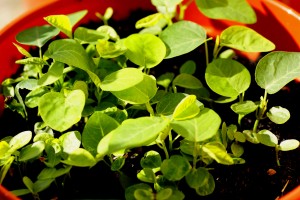 As winter starts (hopefully) winding to a close, we’re looking ahead to planting those early spring seeds. What can you do to ensure the success of your seeds? Here are a few tips to get your seeds to germinate successfully.
As winter starts (hopefully) winding to a close, we’re looking ahead to planting those early spring seeds. What can you do to ensure the success of your seeds? Here are a few tips to get your seeds to germinate successfully.
Things to Remember
Always use fresh, quality seeds. Plan ahead, so you have ample time to prepare the garden bed or containers. Abide by the instructions on the seed packet.
Preparing the planting site
Loose, well drained soil comprising copious quantities of organic matter presents the ideal conditions for seed germination. Never start too early, especially if you live in a cold-winter area. It’s easy to check if the soil’s dry enough for planting- simply squeeze a handful into a ball and let it drop. If the soil breaks apart, you’re good to go. Rake the soil to grind the clods. Work in compost or other decayed organic matter and level the surface.
The Right Time for Planting
When it comes to planting seeds, timing is everything. A majority of vegetable seeds readily (and successfully) germinate at day and night temperatures of 50 to 55°F (10 to 13°C °). When starting vegetable seeds indoors, always use quality seed starting mix and again, follow the instructions on the seed packet for the best results. Make sure to place them in the right light soon as they germinate.
The Right Way of Sowing Seeds
Beans, squash and other large seeds should ideally be sown at a depth of 1 to 2 inches. Smaller seeds should have only a thin layer of soil as cover. For those tiny, dust-like seeds, the best way is to mix them with sand in a 4 to 1 ratio. Also, avoid planting them too close. Refer the instructions of the seed packet for specific planting depth and spacing information for your seed variety.
The Importance of Moisture
Seed germination depends largely on moisture. Dry seeds need to absorb several times their volume of moisture in order to make the embryo gain size and burst open the seed coat. Inconsistent moisture stresses the embryo and too much moisture causes seed rot. What you need here is to water the soil just enough to saturate it, and to water regularly so the soil doesn’t dry up at any point of time. You can also use row covers or vermiculite to conserve soil moisture.
Light
Seedlings need to be exposed to ample light soon as they germinate. If you’ve started seeds indoors, you can either move the seedlings to a sunny window or use an artificial lighting apparatus like our Seed Starting Grow Light.
Thinning
Often, a high number of seedlings will germinate and pop up too close together. You need to thin them out so every little plant gets enough growing room, nutrients, moisture and sunlight to perform its best.
